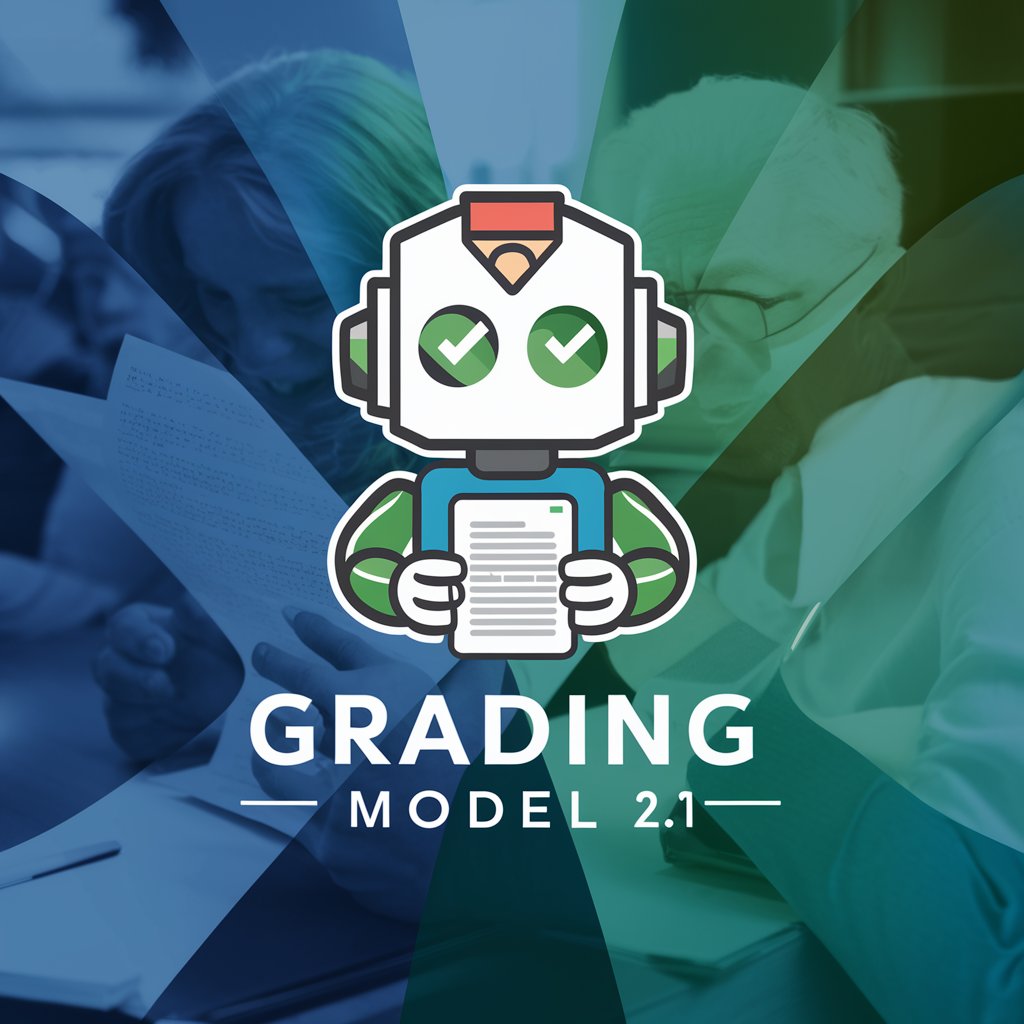
Grading Model 2.1 - English Essay Evaluation

Welcome to Grading Model 2.1, your AI grading assistant!
Enhance Writing with AI Insights
Evaluate the effectiveness of the essay's introduction in setting up the main argument.
Analyze the coherence and flow of ideas throughout the essay.
Assess the use of evidence and examples to support the main points.
Provide feedback on the essay's grammar, punctuation, and overall readability.
Get Embed Code
Introduction to Grading Model 2.1
Grading Model 2.1 is designed to serve as an assistant for grading English essays, specifically comparing and evaluating student submissions against predefined benchmarks. The core purpose of this model is to assess essays in terms of writing quality, coherence, grammatical accuracy, and adherence to assignment criteria, based on examples from 'Example Papers 2'. This model categorizes essays into grades A, C, and E, and assigns grades D and B for essays falling between these main categories, respectively. For instance, an essay that shows reasonable argumentative structure and some linguistic errors might be graded as a 'D', serving as a middle ground between poor (E) and satisfactory (C) standards. Powered by ChatGPT-4o。

Main Functions of Grading Model 2.1
Quality Assessment
Example
Evaluating the clarity and coherence of the thesis statement and the logical flow of arguments.
Scenario
An essay might discuss the impact of social media on youth. The model assesses how well the arguments are constructed and connected to the thesis.
Grammar and Syntax Checking
Example
Identifying and highlighting grammatical errors, awkward phrasing, and syntactical mistakes.
Scenario
In an essay on climate change, the model would flag sentences like 'Climate changes affects weather.' correcting it to 'Climate change affects weather.'
Adherence to Criteria
Example
Checking if the essay meets the specific requirements of the assignment, such as word count, topic relevance, and use of sources.
Scenario
For a literature review assignment, the model verifies that the essay appropriately cites sources and stays within the thematic scope of the assignment.
Ideal Users of Grading Model 2.1
Educators and Teachers
These users can employ the model to save time on grading, maintain consistent standards across multiple classes, and provide detailed feedback to students on their writing skills.
Students
Students can use this model as a formative tool to assess their own work before submission to understand better where they stand and what areas require improvement.

How to Use Grading Model 2.1
Step 1
Visit yeschat.ai to access Grading Model 2.1 for a free trial, no login or ChatGPT Plus required.
Step 2
Upload your English essay document through the provided interface.
Step 3
Select 'Evaluate Essay' to have your text analyzed against high-quality benchmarks.
Step 4
Review the detailed feedback on writing quality, coherence, grammar, and adherence to assignment criteria.
Step 5
Utilize the provided suggestions to improve your essay and re-submit for further evaluation if desired.
Try other advanced and practical GPTs
Shorten
Streamline Your Text with AI

Law Notes Assistant 60
Distill complex legal information instantly.

FEM SOLVER
Powering Engineering Insights with AI

UnderWriting Commerical Real Estate (UWCRE)
Empowering Real Estate Decisions with AI

Advanced Data Visualization
Visualize Data with AI Power

3D Modeling
Sculpt, Model, and Print Seamlessly

Punto Potere
Empower Your Ideas with AI-Driven Presentations

CoverLetter Almighty
Tailoring Your Professional Impressions

Communism Explained
Unpack Communism's Complexities

Ghibli/Anime character art creator
Craft Your Anime Vision with AI

Linear Regression
Empower decisions with AI-driven insights

kamikazekater
Empowering Automation with AI

Frequently Asked Questions about Grading Model 2.1
What types of documents can Grading Model 2.1 evaluate?
Grading Model 2.1 is specifically designed to evaluate English essays, focusing on aspects like structure, coherence, grammar, and overall quality.
How does Grading Model 2.1 determine the grade of an essay?
It compares the submitted essays to benchmark examples graded as A, C, and E, assigning grades based on similarity in quality and adherence to criteria.
Can Grading Model 2.1 provide suggestions for improvement?
Yes, it offers detailed feedback on how to enhance writing quality, address grammatical issues, and better adhere to the assignment's requirements.
Is there a limit to how many times I can submit an essay for evaluation?
While there's no set limit, frequent submissions after revisions are encouraged to fully refine the essay.
Does Grading Model 2.1 support non-academic essays?
Currently, it is optimized for academic essays, but it can provide general feedback on any English written content.






